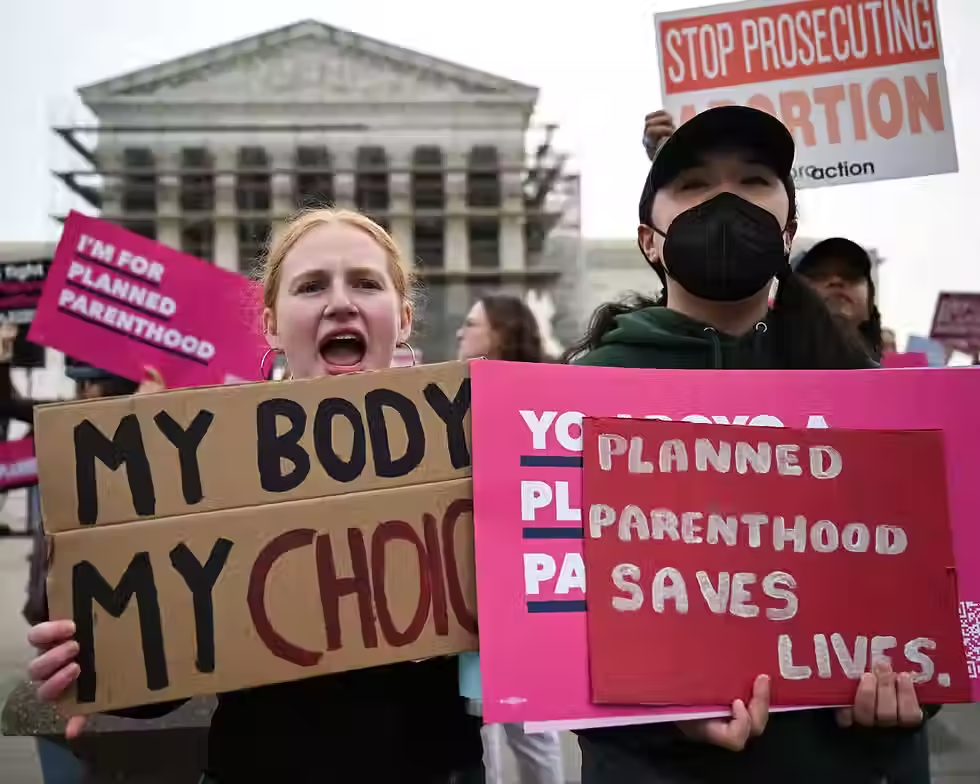What Is Planned Parenthood? Senate’s Medicaid Funding Ban Sparks Lawsuit and Debate
- The Female Body

- Jul 17
- 3 min read

Planned Parenthood is a nonprofit organisation that delivers reproductive and sexual health services, with a mission to promote informed choices through education and healthcare. The organisation provides a broad spectrum of care including contraception, STI screening and treatment, cancer prevention services, pregnancy testing and counselling, and abortion care, particularly for medically underserved populations.
With nearly 600 health centres nationwide, Planned Parenthood serves over 1 million Medicaid patients annually, most of them low-income, uninsured, or young people seeking accessible and non-judgemental care.
A Coordinated Attack on Reproductive Health
The Senate vote follows a recent Supreme Court ruling that allows individual states to exclude Planned Parenthood from their Medicaid programmes. This stems from a 2018 executive order by the South Carolina governor banning Medicaid reimbursements to any clinics providing abortion services.
Although the Hyde Amendment already prohibits the use of federal funds for abortion in most cases, Medicaid reimbursements remain essential for the broader range of non-abortion services that Planned Parenthood offers, such as:
Birth control and contraceptive counselling
STI testing and treatment
Cancer screenings
Routine gynaecological exams
If the one-year ban takes effect, nearly 200 health centres across 24 states could be forced to close. The impact could be particularly severe in blue states, which have higher numbers of Medicaid users and are home to many of the affected clinics.
Planned Parenthood Sues Over “Defund Provision”
On Monday (7th July 2025), Planned Parenthood filed a federal lawsuit in Boston, arguing that the Medicaid funding ban is unconstitutional. Planned Parenthood said in its lawsuit:
“The true design of the Defund Provision is simply to express disapproval of, attack, and punish Planned Parenthood, which plays a particularly prominent role in the public debate over abortion,”
The lawsuit continued:
“Stripping away this patient volume and reimbursements for care provided will result in the elimination of services, laying off staff and health center closures. The public health consequences for Medicaid patients and non-Medicaid patients alike will be dire and compounding.”
The lawsuit also suggests that Congress misunderstood Planned Parenthood’s organisational structure when drafting the bill. While the national group, Planned Parenthood Federation of America, serves as the umbrella organisation, services are actually delivered by nearly 50 independent affiliate groups. This decentralised model complicates attempts to defund the entire organisation through blanket legislation.
Planned Parenthood is asking the courts to invalidate the funding ban or, at a minimum, to preserve Medicaid reimbursements for clinics that do not provide abortion care. If left intact, the group argues, the provision could function as a “backdoor abortion ban," especially in areas where Planned Parenthood is the only abortion provider. The organisation currently delivers an estimated 38% of abortions nationwide.
Alexis McGill Johnson, Planned Parenthood Federation of America’s CEO, said:
“We’re facing a reality of the impact on shutting down almost half of abortion-providing health centres. It does feel existential. Not just for Planned Parenthood, but for communities that are relying on access to this care.”
The Bigger Picture: Legal, Financial, and Political Pressure
The lawsuit comes amid broader financial and legal challenges. Earlier this year, the Trump administration froze tens of millions of dollars allocated to family planning providers through Title X, the country’s largest publicly funded contraceptive programme. While some providers have since seen their funding restored, Planned Parenthood affiliates have not.
In addition, a recent Supreme Court decision upheld South Carolina’s effort to remove Planned Parenthood from its Medicaid program, setting a precedent that could embolden other red states to follow suit.
Even if the current lawsuit is successful, the organisation will likely continue grappling with the long-term consequences of that ruling.
Can Other Clinics Fill the Gap?
Some lawmakers have argued that patients can turn to federally qualified health centres (FQHCs) in place of Planned Parenthood. However, reproductive health experts and policy analysts caution that FQHCs are not equipped to absorb the additional demand.
A Guttmacher Institute analysis concluded that these centres lack the staff, training, and capacity to provide the full range of services that Planned Parenthood offers. Patients could face longer wait times, reduced quality of care, or be left without any care at all.
Economic and Public Health Consequences
According to the Congressional Budget Office, the one-year Medicaid funding ban could cost taxpayers an additional $52 million over the next decade, largely due to a rise in unintended pregnancies and greater demand for public health services.
While supporters of the provision celebrate it as a win for the anti-abortion movement, reproductive rights advocates stress that the broader impact on health equity will be felt across the country, particularly by communities already facing systemic barriers to care.




Comments